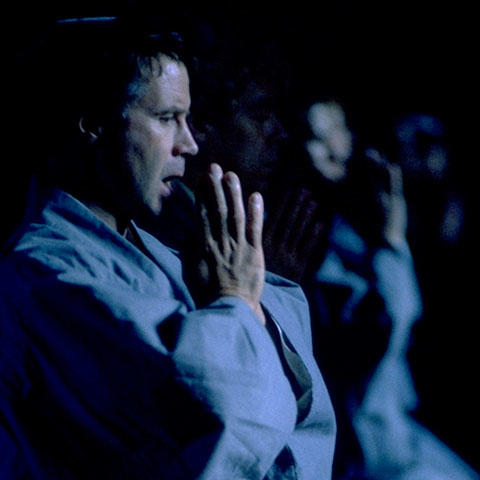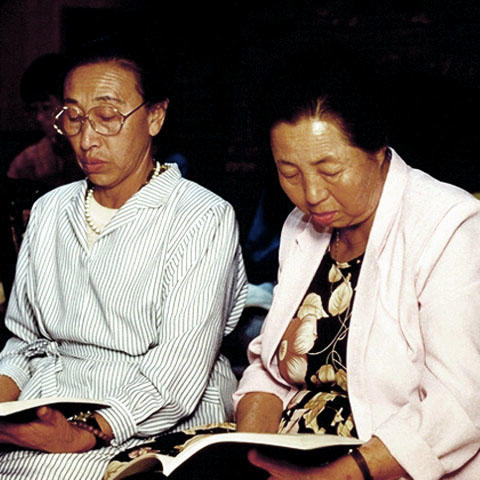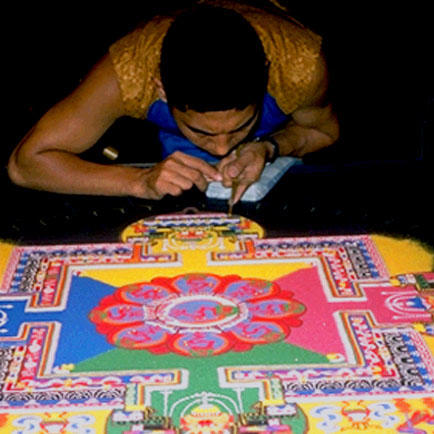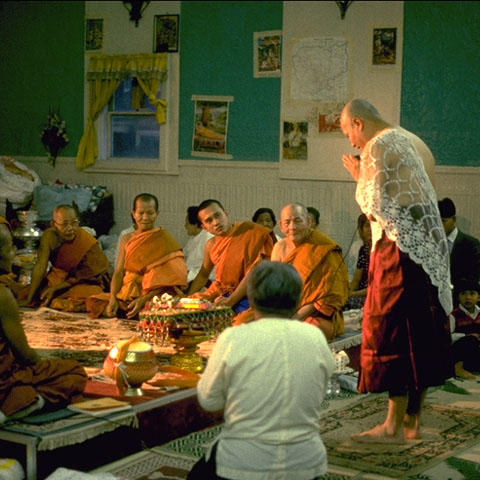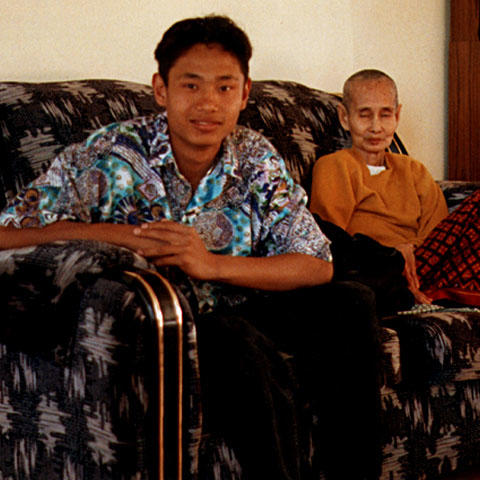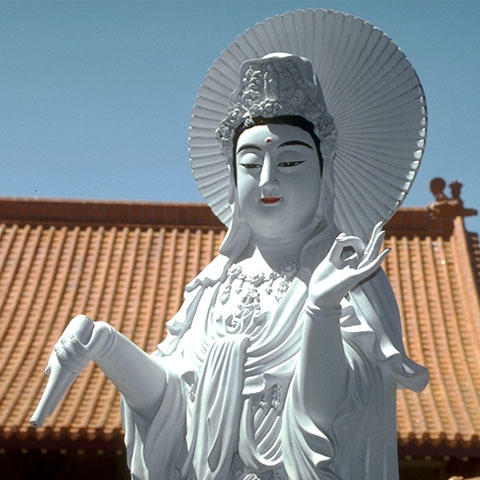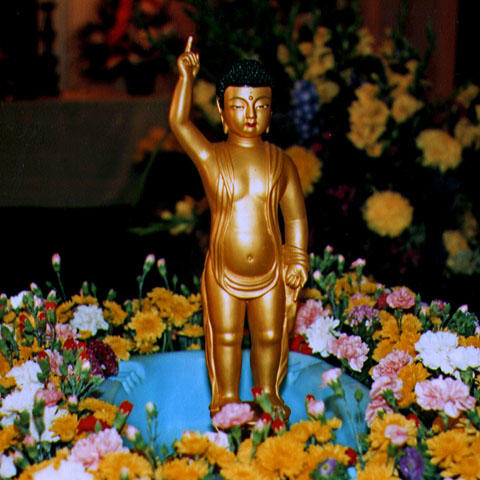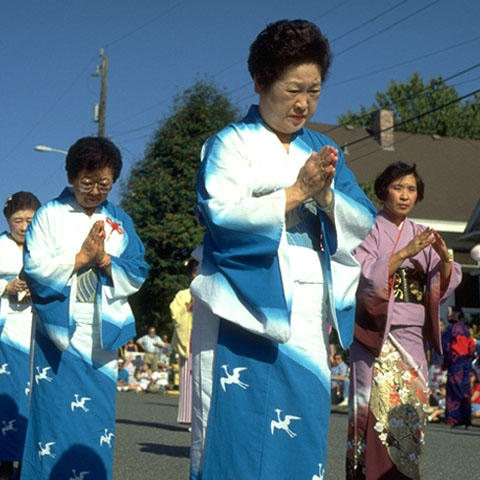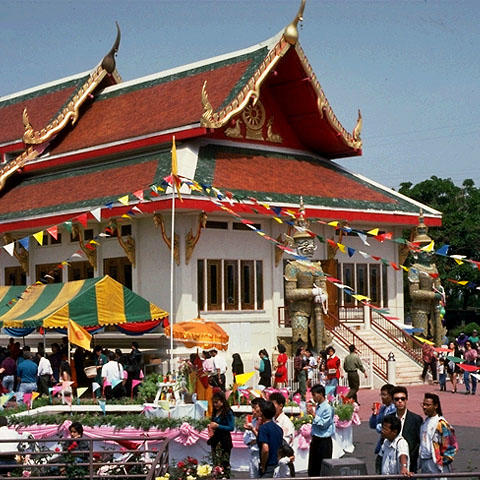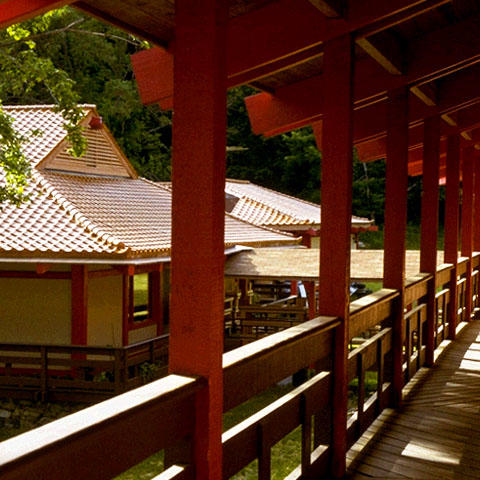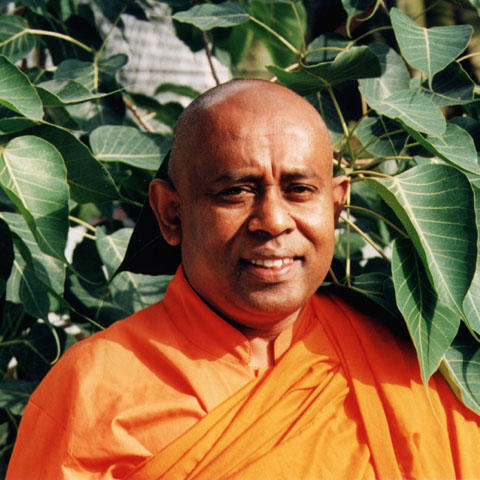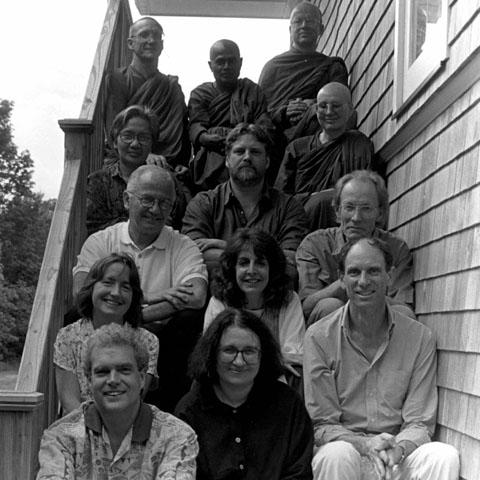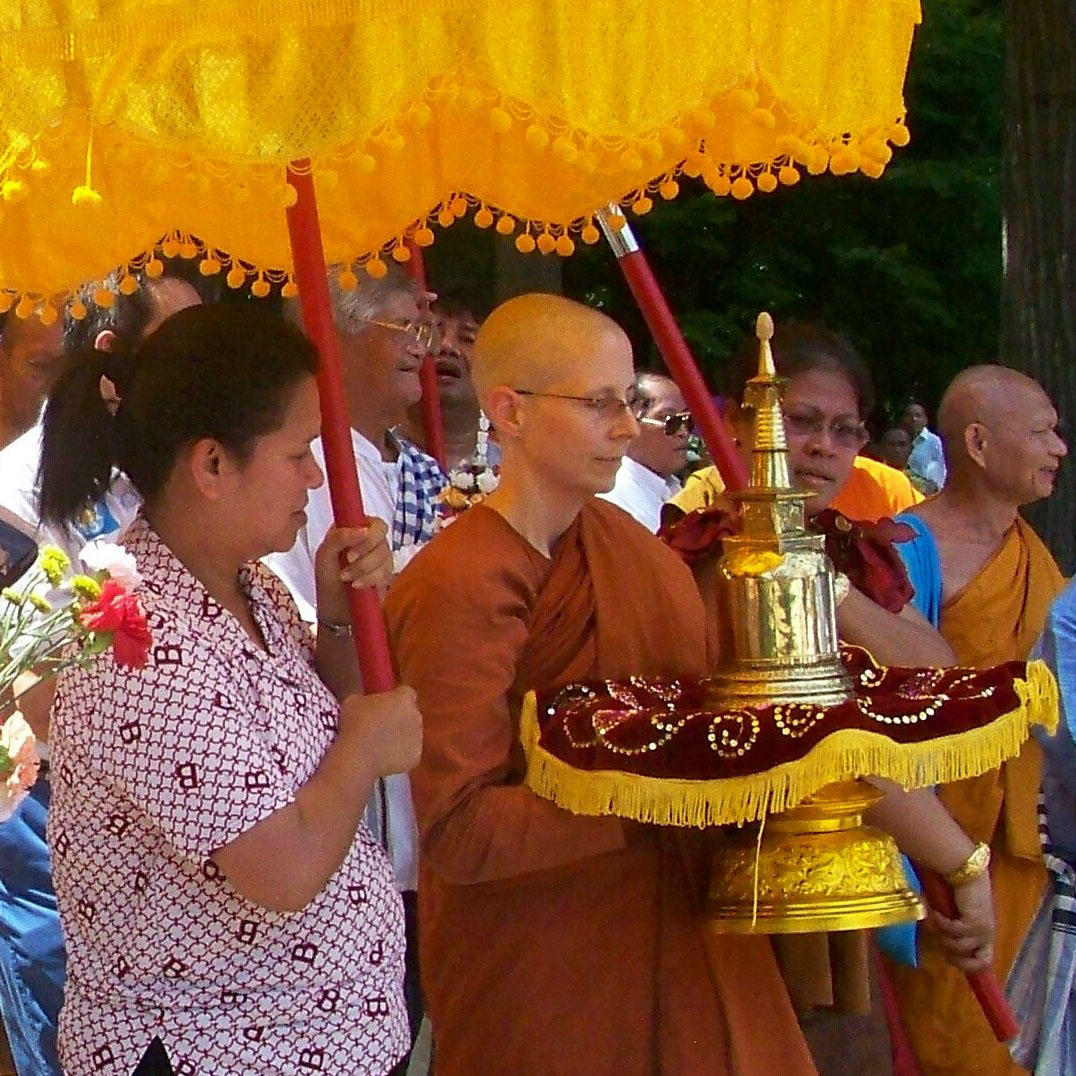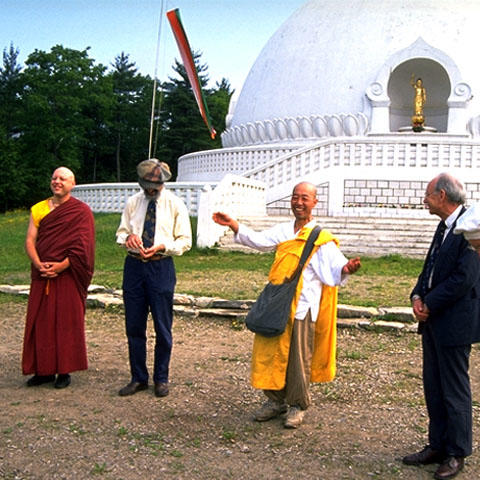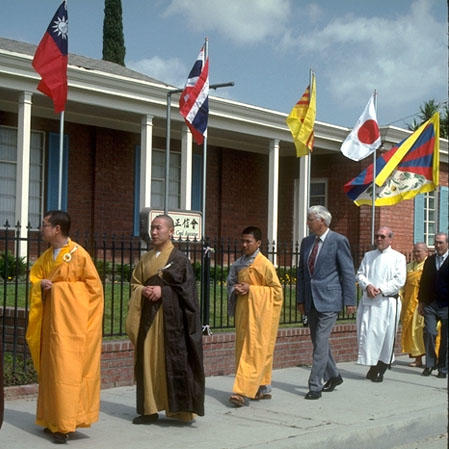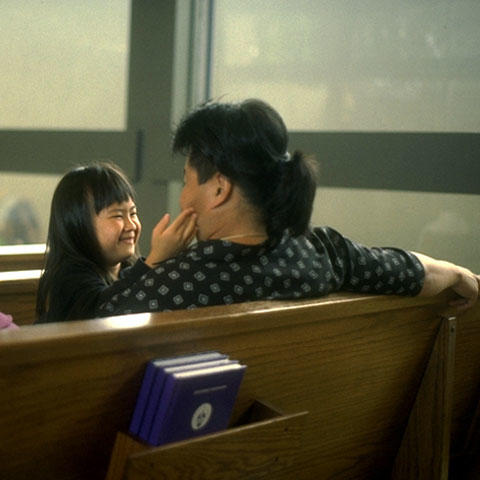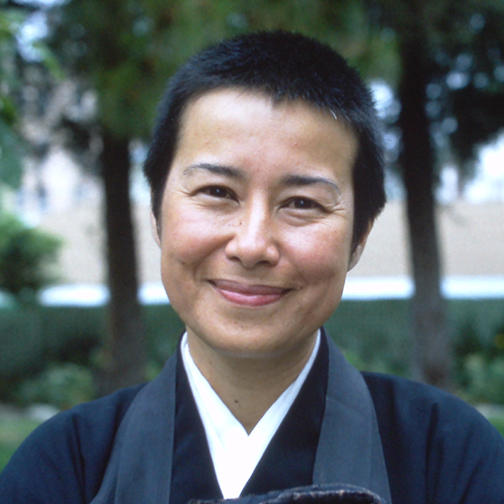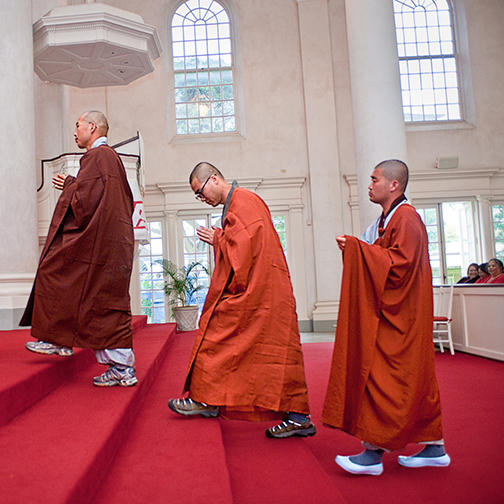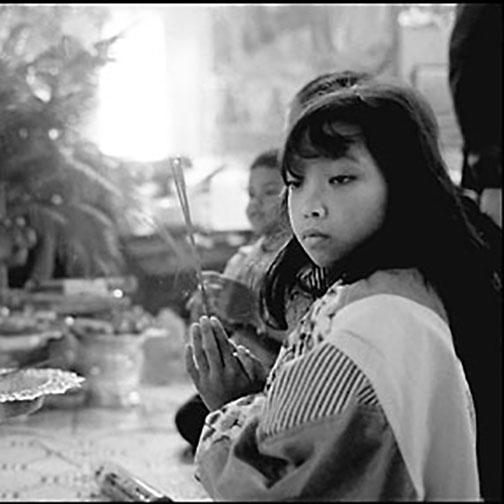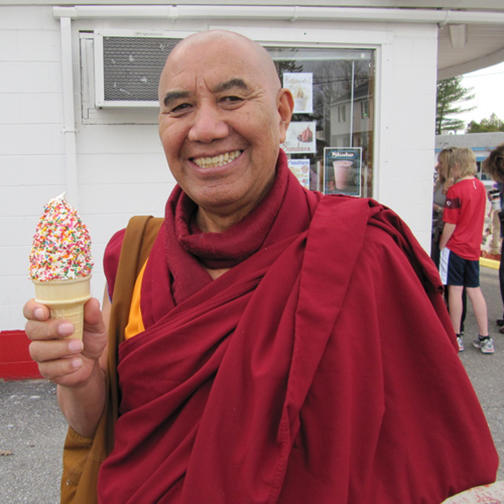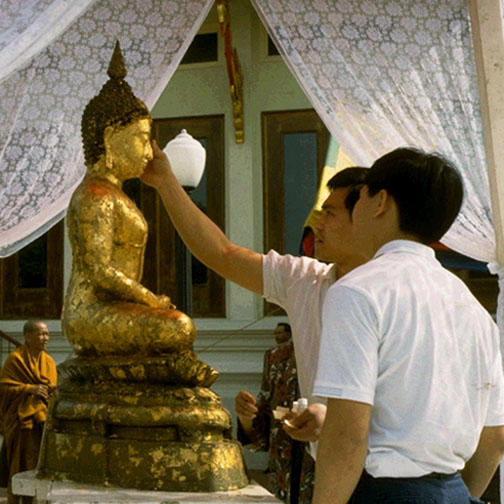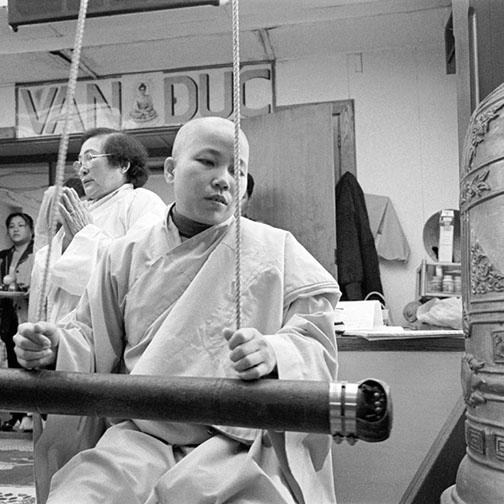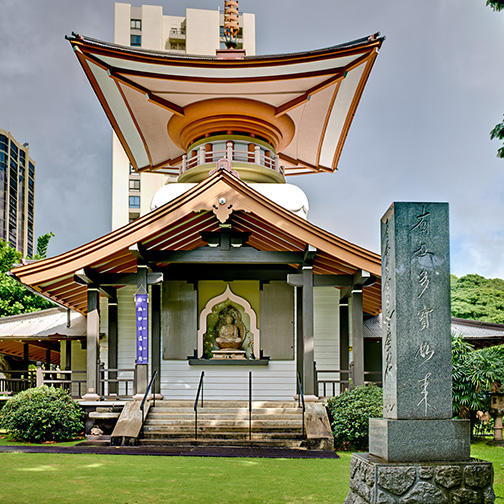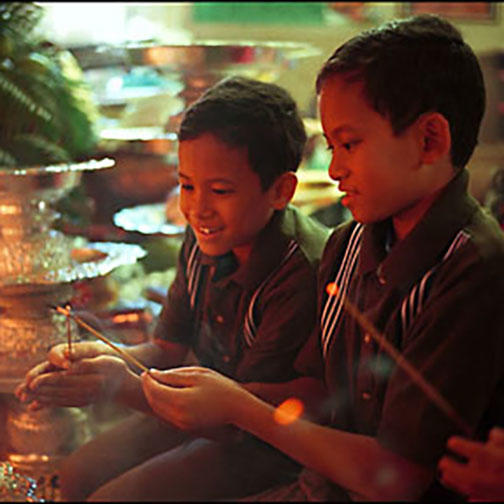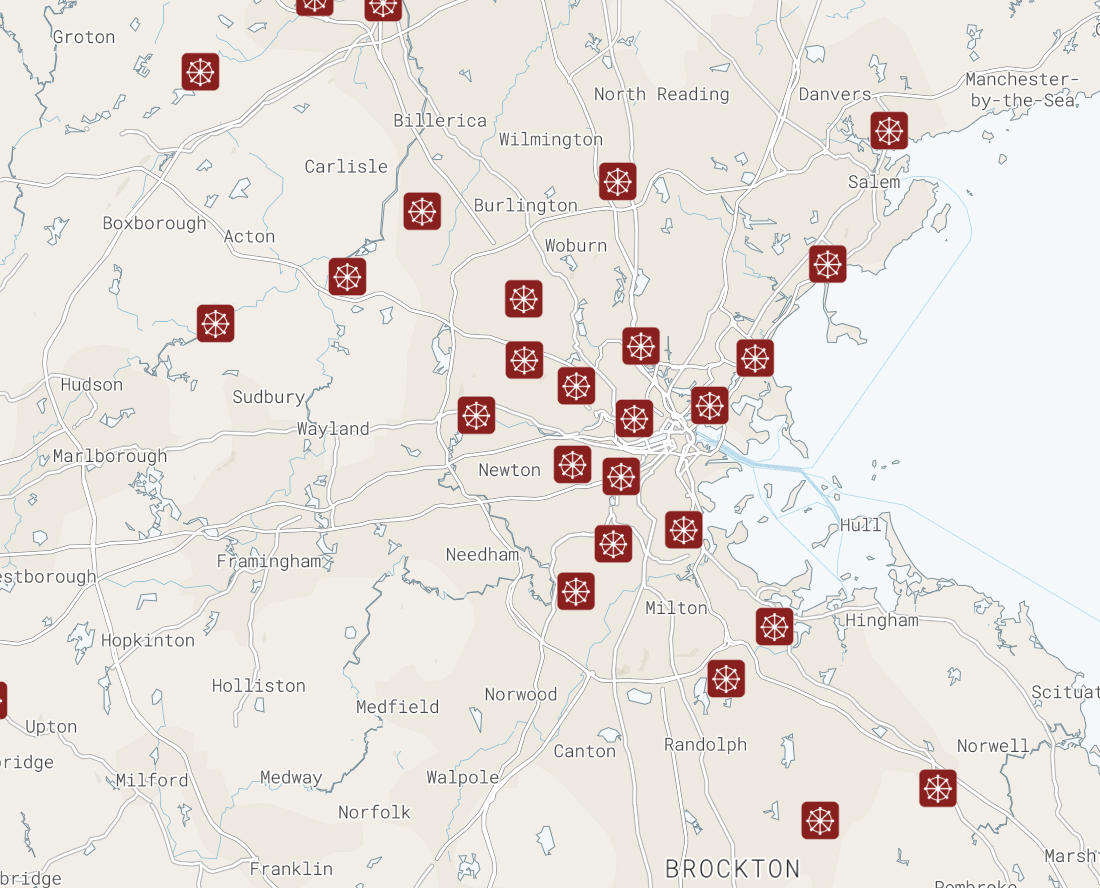Buddhism
Buddhism
Buddhism
Essays
The Path of Awakening
Prince Siddhartha: Renouncing the World
Becoming the “Buddha”: The Way of Meditation
The Dharma: The Teachings of the Buddha
The Sangha: The Buddhist Community
The Three Treasures
The Expansion of Buddhism
Theravada: The Way of the Elders
Mahayana: The Great Vehicle
Vajrayana: The Diamond Vehicle
The Image of the Buddha
The Practice of Mindfulness
One Hand Clapping?
Sesshin: A Meditation Retreat
Chanting the Sutras
Creating a Mandala
Becoming a Monk
From Street Gangs to Temple
Devotion to Guanyin
Buddha’s Birthday
Remembering the Ancestors
Celebrating the New Year
Building a Pure Land on Earth
Monastery in the Hudson Valley
Buddhism Timeline
Buddhism in the World (text)
Ca. 6th-5th c. BCE Life of Siddhartha Gautama, the Buddha
The dates of the Buddha remain a point of controversy within both the Buddhist and scholarly communities. Though many scholars today place the Buddha’s life between 460-380 BCE, according to one widely accepted traditional account, Siddhartha was born as a prince in the Shakya clan in 563 BCE. After achieving enlightenment at the age of 36, the Buddha spent the remainder of his life giving spiritual guidance to an ever-growing body of disciples. He is said to have entered into parinirvana (nirvana after death) in 483 BCE at the age of 81.
c. 480-380 BCE The First Council
Though specific dates are uncertain, a group of the Buddha’s disciples is said to have come together shortly after the Buddha’s parinirvana in hopes of establishing guidelines to ensure the continuity of the Sangha. According to tradition, as many as 500 prominent arhats gathered in Rajagriha to recite together and standardize the Buddha’s sutras (discourses on Dharma) and vinaya (rules of conduct).
c. 350 BCE The Second Council
It remains unclear if what is known as the Second Council refers to one particular assemblage of monks or if there were several meetings convened during the 4th century BCE to clarify points of controversy. It also remains unclear precisely what matters of doctrine or conduct were in dispute. What is clear is that this council resulted in the first schism in the Sangha, between the Sthaviravada and the Mahasanghika.
269-232 BCE The Spread of Buddhism Through South Asia
After witnessing the great bloodshed and suffering caused by his military campaigns, Indian Emperor Ashoka Maurya converted to Buddhism, sending missionaries throughout India and into present day Sri Lanka.
200 BCE-200 CE Emergence of Two Schools of Buddhism
Differing interpretations of the Buddha’s teachings resulted in the development of two main schools of Buddhism. The first branch, Mahayana, referred to itself as the “Great Vehicle,” and is today principally found in China, Korea, and Japan. The second branch comprised 18 schools, of which only one exists today — Theravada, or the “Way of the Elders.” Theravada Buddhism is presently followed in Sri Lanka, Burma, Thailand, Cambodia, and Laos.
65 CE First Mention of Buddhism in China
Han dynasty records note that Prince Ying of Ch’u, a half-brother of the Han emperor, provided a vegetarian feast for the Buddhist laity and monks living in his kingdom around 65 CE. This indicates that a Buddhist community had already formed there.
c. 100 CE Ashvaghosha Writes Buddhacarita
Among the early biographies of the Buddha was the Buddhacarita, written in Sanskrit by the Indian poet Ashvaghosha. Buddhacarita, literally “Life of the Buddha,” is regarded as one of the greatest epic poems of all history.
200s CE Nagarjuna Founds the Madhyamaka School
Nagarjuna is one of the most important philosophers of the Buddhist tradition. Based on his reading of the Perfection of Wisdom sutras, Nagarjuna argued that everything in the world is fundamentally sunya, or “empty” — that is, without inherent existence. This idea that the world is real yet radically impermanent and interdependent has played a central role in Buddhist philosophy.
372 CE Buddhism Introduced to Korea from China
In 372 CE the Chinese king Fu Chien sent a monk-envoy, Shun-tao, to the Koguryo court with Buddhist scriptures and images. Although all three of the kingdoms on the Korean peninsula soon embraced Buddhism, it was not until the unification of the peninsula under the Silla in 668 CE that the tradition truly flourished.
400s CE Buddhaghosa Systematizes Theravada Teachings
Buddhaghosa was a South Indian monk who played a formative role in the systematization of Theravada doctrine. After arriving in Sri Lanka in the early part of the fifth century CE, he devoted himself to editing and translating into Pali the scriptural commentaries that had accumulated in the native Sinhalese language. He also composed the Visuddhimagga, “Path of Purity,” an influential treatise on Theravada practice. From this point on, Theravada became the dominant form of Buddhism in Sri Lanka and eventually spread to Southeast Asia.
402 CE Pure Land Buddhism Established in China
In 402 CE, Hui-yuan became the first Chinese monk to form a group specifically devoted to reciting the vow to be reborn in the Western Paradise, and founded the Donglin Temple at Mount Lu for this purpose. Subsequent practitioners of Pure Land Buddhism regard Hui-yuan as the school’s founder.
520 CE Bodhidharma and Ch’an (Zen) in China
The Ch’an (Zen) school attributes its establishment to the arrival of the monk Bodhidharma in Northern China in 520 CE. There, he is said to have spent nine years meditating in front of a wall before silently transmitting the Buddha’s Dharma to Shen-Kuang, the second patriarch. All Zen masters trace their authority to this line.
552 CE Buddhism Enters Japan from Korea
In 552 CE the king of Paekche sent an envoy to Japan in hopes of gaining military support. As gifts, he sent an image of Buddha, several Buddhist scriptures, and a memorial praising Buddhism. Within three centuries of this introduction, Buddhism would become the major spiritual and intellectual force in Japan.
700s CE Vajrayana Buddhism Emerges in Tibet
Buddhist teachings and practices appear to have first made their way into Tibet in the mid-7th century CE. During the reign of King Khri-srong (c. 740-798 CE), the first Tibetan monastery was founded and the first monk ordained. For the next four hundred years, a constant flow of Tibetan monks made their way to Northern India to study at the great Buddhist universities. It was from the university of Vikramasila around the year 767 that the yogin-magician Padmasambhava is said to have carried the Vajrayana teachings to Tibet, where they soon became the dominant form of Buddhism.
1044-1077 CE Theravada Buddhism Established in Burma
Theravada Buddhism was practiced in pockets of southern Burma since about the 6th century CE. However, when King Anawrahta ascended the throne in 1044, Shin Arahan, a charismatic Mon monk from Southern Burma, convinced the new monarch to establish a more strictly Theravadin expression of Buddhism for the entire kingdom. From that time on, Theravada would remain the tradition of the majority of the Burmese people.
c. 1050 CE Development of Jogye Buddhism in Korea
The Ch’an school, which first arrived in Korea from China in the 8th century CE, eventually established nine branches, known as the Nine Mountains. In the 11th century, these branches were organized into one system under the name of Jogye. Although all Buddhist teachings were retained, the kong-an (koan) practice of Lin-chi Yixuan gained highest stature as the most direct path to enlightenment.
1100s CE Pure Land Buddhism Established in Japan
Following a reading of a Chinese Pure Land text, the Japanese monk Honen Shonin (1133-1212 CE) became convinced that the only effective mode of practice was nembutsu: chanting the name of Amitabha Buddha. This soon became a dominant form of Buddhist practice in Japan.
1100s CE Rinzai School of Zen Buddhism Established in Japan
In the 12th century CE, a Japanese monk named Eisai returned from China, bringing with him both green tea and the Rinzai school of Zen Buddhism. In the form of meditation practiced by this school, the student’s only guidance is to come from the subtle hint of a raised eyebrow, the sudden jolt of an unexpected slap, or the teacher’s direct questioning on the meaning of a koan.
1203 CE Destruction of Buddhist Centers in India
By the close of the first millennium CE, Buddhism had passed its zenith in India. Traditionally, the end of Indian Buddhism is identified with the advent of Muslim Rule in Northern India. The Turk Muhammad Ghuri razed the last two great Buddhist universities, Nalanda and Vikramasila, in 1197 and 1203 respectively. However, recent histories have suggested that the destruction of these monasteries was militarily, rather than religiously, motivated.
1200s CE True Pure Land Buddhism Established
Honen’s disciple Shinran Shonin (1173-1262 CE) began the devotional “True Pure Land” movement in the 13th century CE. Considering the lay/monk distinction invalid, Shinran married and had several children, thereby initiating the practice of married Jodo Shinshu clergy and establishing a familial lineage of leadership — traits which continue to distinguish the school to this day.
1200s CE Dōgen Founds Soto Zen in Japan
Dōgen (1200-1253 CE), an influential Japanese priest and philosopher, spent most of his two years in China studying T’ien-t’ai Buddhism. Disappointed by the intellectualism of the school, he was about to return to Japan when the Ts’ao-tung monk Ju-ching (Rujing) explained that the practice of Zen simply meant “dropping off both body and mind.” Dōgen, immediately enlightened, returned to Japan, establishing Soto (the Japanese pronunciation of the Chinese graphs for Ts’ao-tung) as one of the pre-eminent schools.
1253 CE Nichiren Buddhism Established in Japan
As the sun began to rise on May 17, 1253 CE, Nichiren Daishonin climbed to the crest of a hill, where he cried out “Namu Myoho Renge Kyo,” “Adoration to the Sutra of the Lotus of the Perfect Truth.” Nichiren considered the recitation of this mantra to be the core of the true teachings of the Buddha. He believed that it would eventually spread throughout the world, a conviction sustained by contemporary sects of the Nichiren school, especially the Soka Gakkai.
1279-1360 CE Theravada Buddhism Established in Southeast Asia
With Kublai Khan’s conquest of China in the thirteenth century CE, ever greater numbers of Tai migrated from southwestern China into present day Thailand and Burma. There, they established political domination over the indigenous Mon and Khmer peoples, while appropriating elements of these cultures, including their Buddhist faith. By the time that King Rama Khamhaeng had ascended the throne in Sukhothai (central Thailand) in 1279, a monk had been sent to Sri Lanka to receive Theravadin texts. During the reigns of Rama Khamhaeng’s son and grandson, Sinhala Buddhism spread northward to the Tai Kingdom of Chiangmai. Within a century, the royal houses of Cambodia and Laos also became Theravadin.
1391-1474 CE The First Dalai Lama
Gedun Drupa (1391-1474 CE), a Tibetan monk of great esteem during his lifetime, was considered after his death to have been the first Dalai Lama. He founded the major monastery of Tashi Lhunpo at Shigatse, which would become the traditional seat of Panchen Lamas (second only to the Dalai Lama).
1881 CE Founding of Pali Text Society
Ever since its founding by the British scholar T.W. Rhys Davids in 1881 CE, the Pali Text Society has been the primary publisher of Theravada texts and translations into Western languages.
1891 CE Anagarika Dharmapala Founds Mahabodhi Society
Sri Lankan writer Anagarika Dharmapala played an important role in restoring Bodh-Gaya, the site of the Buddha’s enlightenment, which had badly deteriorated after centuries of neglect. In order to raise funds for this project, Dharmapala founded the Mahabodhi Society, first in Ceylon and later in India, the United States, and Britain. He also edited the society’s periodical, The Mahabodhi Journal.
1930 CE Soka Gakkai Established in Japan
Soka Gakkai is a Japanese Buddhist movement that was begun in 1930 CE by an educator named Tsunesaburo Makiguchi. Soon after its founding, it became associated with Nichiren Shoshu, a sect of Nichiren Buddhism. Today the organization has over twelve million members around the world.
1938 CE Rissho Kosei-Kai Established in Japan
The Rissho Kosei-Kai movement was founded by the Rev. Nikkyo Niwano in 1938 CE, and is based on the teachings set forth in the Lotus Sutra and works for individual and world peace. Rev. Niwano was awarded the Templeton Prize for Progress in Religion in 1979 and honored by the Vatican in 1992. The Rissho Kosei-Kai has since been active in interfaith activities throughout the world.
1949 CE Buddhist Sangha Flees Mainland China
With the establishment of the People’s Republic of China, Buddhist monks and nuns fled to Hong Kong, Taiwan, Malaysia, and Singapore. Many of these monks and nuns subsequently immigrated to Australia, Europe and the United States.
1950 CE World Fellowship of Buddhists Inaugurated in Sri Lanka
The World Fellowship of Buddhists was established in 1950 CE in Sri Lanka to bring Buddhists together in promoting common goals. Since 1969, its permanent headquarters have been in Thailand, with regional offices in 34 different countries.
1956 CE Buddhist Conversions in India
On October 14, 1956 CE, Bhim Rao Ambedkar (1891-1956), India’s leader of Hindu untouchables, publicly converted to Buddhism as part of a political protest. As many as half a million of his followers also took the three refuges and five precepts on that day. In the following years, over four million Indians, chiefly from the castes of untouchables, declared themselves Buddhists.
1959 CE Dalai Lama Flees to India
With the Chinese occupation of Tibet, the Dalai Lama, the Karmapa, and other Vajrayana Buddhist leaders fled to India. A Tibetan government in exile was established in Dharamsala, India.
1966 CE Thich Nhat Hanh Visits the U.S. and Western Europe
Thich Nhat Hanh is a Vietnamese monk, teacher, and peace activist. While touring the U.S. in 1966, Nhat Hanh was outspoken against the American-supported Saigon government. As a result of his criticism, Nhat Hanh faced certain imprisonment upon his return to Vietnam. He therefore decided to take asylum in France, where he founded Plum Village, today an important center for meditation and action.
1975 CE Devastation of Buddhism in Cambodia
Pol Pot’s Marxist regime came to power in Cambodia in 1975 CE. Over the four years of his governance, most of Cambodia’s 3,600 Buddhist temples were destroyed. The Sangha was left with an estimated 3,000 of its 50,000 monks. The rest did not survive the persecution.
1989 CE Founding of the International Network of Engaged Buddhists (INEB)
The International Network of Engaged Buddhists (INEB) began in Thailand in 1989 as a conference of 36 monks and lay persons from 11 countries. Today, it has expanded to 160 members and affiliates from 26 countries. As its name suggests, INEB endeavors to facilitate Buddhist participation in social action in order to create a just and peaceful world.
1989 CE Dalai Lama Receives Nobel Peace Prize
Tenzin Gyatso, the Fourteenth Dalai Lama, was awarded the Nobel Peace Prize in 1989 for his tireless work spreading a message of non-violence. He has said on many occasions about Buddhism, “My religion is very simple – my religion is kindness.”
2010 CE Western Buddhist Teachers call for U.S. Commission of Inquiry to Burma
In 2010, prominent Buddhist teachers in the U.S. signed a letter to President Barack Obama urging him to repudiate the results of the upcoming Burmese election, in light of crimes against ethnic groups committed by the Burmese military regime.
Present
With over 520 million followers, Buddhism is currently the world’s fourth-largest religious tradition. Though Theravada and Mahayana are its two major branches, contemporary Buddhism comprises a wide diversity of practices, beliefs, and traditions — both throughout East and Southeast Asia and worldwide.
Buddhism in America (text)
1853 CE The First Chinese Temple in “Gold Mountain”
Attracted by the 1850s Gold Rush, many Chinese workers and miners came to California, which they called “Gold Mountain” — and brought their Buddhist and Taoist traditions with them. In 1853, they built the first Buddhist temple in San Francisco’s Chinatown. By 1875, Chinatown was home to eight temples, and by the end of the century, there were hundreds of Chinese temples and shrines along the West Coast.
1878 CE Kuan-yin in Hawaii
In 1878, the monk Leong Dick Ying brought to Honolulu gold-leaf images of the Taoist sage Kuan Kung and the bodhisattva of compassion Kuan-yin. He thus established the Kuan-yin Temple, which is the oldest Chinese organization in Hawaii. The Temple has been located on Vineland Avenue in Honolulu since 1921.
1879 CE The Light of Asia Comes West
Sir Edwin Arnold’s The Light of Asia, a biography of the Buddha in verse, was published in 1879. This immensely popular book, which went through eighty editions and sold over half a million copies, gave many Americans their first introduction to the Buddha.
1882 CE The Chinese Exclusion Act
Two decades of growing anti-Chinese sentiment in the U.S. led to the passage of the Chinese Exclusion Act in 1882. The act barred new Chinese immigration for ten years, including that by women trying to join their husbands who were already in the U.S., and prohibited the naturalization of Chinese people.
1893 CE Buddhists at the Parliament of the World’s Religions
The 1893 Parliament of the World’s Religions, held in Chicago in conjunction with the World Columbian Exposition, included representatives of many strands of the Buddhist tradition: Anagarika Dharmapala (Sri Lankan Maha Bodhi Society), Shaku Soyen (Japanese Rinzai Zen), Toki Horyu (Shingon), Ashitsu Jitsunen (Tendai), Yatsubuchi Banryu (Jodo Shin), and Hirai Kinzo (a Japanese lay Buddhist). Days after the Parliament, in a ceremony conducted by Anagarika Dharmapala, Charles T. Strauss of New York City became the first person to be ordained into the Buddhist Sangha on American soil.
1894 CE The Gospel of Buddha
The Gospel of Buddha was an influential book published by Paul Carus in 1894. The book brought a selection of Buddhist texts together in readable fashion for a popular audience. By 1910, The Gospel of Buddha had been through 13 editions.
1899 CE Jodo Shinshu Buddhism and the Buddhist Churches of America
The Young Men’s Buddhist Association (Bukkyo Seinenkai), the first Japanese Buddhist organization on the U.S. mainland, was founded in 1899 under the guidance of Jodo Shinshu missionaries Rev. Dr. Shuya Sonoda and Rev. Kakuryo Nishijima. The following years saw temples established in Sacramento (1899), Fresno (1900), Seattle (1901), Oakland (1901), San Jose (1902), Portland (1903), and Stockton (1906). This organization, initially called the Jodo Shinshu Buddhist Mission of North America, went on to become the Buddhist Churches of America (incorporated in 1944). Today, it is the largest Buddhist organization serving Japanese-Americans, entailing some 60 temples and a membership of about 19,000.
1900 CE First Non-Asian Buddhist Association
In 1900, a group of Euro-Americans attracted to the Buddhist teachings of the Jodo Shinshu organized the Dharma Sangha of the Buddha in San Francisco.
1915 CE World Buddhist Conference
Buddhists from throughout the world gathered in San Francisco in August 1915 at a meeting convened by the Jodo Shinshu Buddhist Mission of North America. Resolutions from the conference were taken to President Woodrow Wilson.
1931 CE Sokei-an and Zen in New York
The Buddhist Society of America was incorporated in New York in 1931 under the guidance of Rinzai Zen teacher Sokei-an. Sokei-an first came to the U.S. in 1906 to study with Shokatsu Shaku in California, though he completed his training in Japan where he was ordained in 1931. Sokei-an died of poor health in 1945, after having spent two years in a Japanese internment camp. The center he established in New York City would evolve into the First Zen Institute of America.
1935 CE Relics of the Buddha to San Francisco
In 1935, a portion of the Buddha’s relics was presented to Bishop Masuyama of the Jodo Shinshu Buddhist Mission of North America, based in San Francisco. This led to the construction of a new Buddhist Church of San Francisco, with a stupa on its roof for the holy relics, located on Pine Street and completed in 1938.
1942 CE Internment of Japanese Americans
Two months after Pearl Harbor, President Franklin Roosevelt signed Executive Order 9066 which eventually removed 120,000 Japanese Americans, both citizens and noncitizens, to internment camps where they remained until the end of World War II. Buddhist priests and other community leaders were among the first to be targeted and evacuated. Zen teachers Sokei-an and Nyogen Senzaki were both interned. Buddhist organizations continued to serve the internees in the camps.
1949 CE Buddhist Studies Center in Berkeley
The Buddhist Studies Center was first established in 1949 in Berkeley, California, under the auspices of the Buddhist Churches of America. In 1966, the center changed its name to the Institute of Buddhist Studies and became the first seminary for Buddhist ministry and research. The Institute affiliated with the Graduate Theological Union in 1985, and today is active in training clergy for the Buddhist Churches of America.
1955 CE Beat Zen and Zen Literature
The Beat Movement was started by American authors who explored American pop culture and politics in the post-war era, with strong themes from Eastern spirituality. The first public reading of the poem “Howl” by Allen Ginsberg in 1955 at the Six Gallery in San Francisco is said to have signalled the beginning of the Beat Zen movement. The late 1950s also saw a Zen literary boom in the U.S. Several popular books on Buddhism were published, including Alan Watt’s bestseller The Way of Zen and Jack Kerouac’s The Dharma Bums.
1960 CE Soka Gakkai in the U.S.
Daisaku Ikeda, President of Soka Gakkai, visited the United States in 1960, largely introducing Soka Gakkai to Americans. By 1992, Soka Gakkai International–USA estimated that it had 150,000 American members.
1965 CE Immigration and Nationality Act
The 1965 Immigration and Nationality Act ended the quota system which had virtually halted immigration from Asia to the United States for over forty years. Following 1965, growing numbers of Asian immigrants from South, Southeast, and East Asia settled in America; many brought Buddhist traditions with them.
1966 CE The Vietnam Conflict and Thich Nhat Hanh in America
The Vietnam conflict incited a surge of Buddhist activism in Saigon, which included some monks immolating themselves as an act of protest. In response, U.S. Secretary of State Henry Cabot Lodge met with Vietnamese and Japanese Buddhist leaders, and the State Department established an Office of Buddhist Affairs headed by Claremont College Professor Richard Gard. In 1966, Vietnamese monk and peace activist Thich Nhat Hanh came to the United States to speak about the conflict. His visit, coupled with the English publication of his book, Lotus in a Sea of Fire, so impressed Dr. Martin Luther King, Jr. that King nominated Nhat Hanh for the Nobel Peace Prize.
1966 CE First Buddhist Monastery in Washington D.C.
The Washington Buddhist Vihara was the first Sri Lankan Buddhist temple in America. It was established in Washington, D.C. in 1966 as a missionary center with the support of the Sri Lankan government. The Ven. Bope Vinita Thera brought an image and a relic of the Buddha to the nation’s capital in 1965. The following year, the Vihara was incorporated, and in 1968, it moved to its present location on 16th Street, NW.
1969 CE Tibetan Center in Berkeley
Tarthang Tulku, a Tibetan monk educated at Banaras Hindu University in India, came to Berkeley and in 1969 established the Nyingma Meditation Center, the first Tibetan Buddhist center in the U.S.
1970 CE Chogyam Trungpa Rinpoche to America
Chogyam Trungpa Rinpoche was an Oxford-educated Tibetan teacher who brought the Karma Kagyu Tibetan Buddhist lineage to the U.S. in 1970. In 1971, he established Karma Dzong in Boulder, Colorado, and in 1973, he founded Vajradhatu, an organization consolidating many Dharmadhatu centers. Cutting through Spiritual Materialism, his classic introduction to Trungpa’s form of Tibetan Buddhism, was published in 1973.
1970 CE International Buddhist Meditation Center
The International Buddhist Meditation Center was established by Ven. Dr. Thich Thien-An, a Vietnamese Zen Master, in Los Angeles in 1970. The College of Buddhist Studies is also located on the grounds of the Center, which is currently under the direction of Thien-An’s student, Ven. Karuna Dharma.
1972 CE Korean Zen Master comes to Rhode Island
Korean Zen Master Seung Sahn came to the United States in 1972 with little money and little knowledge of English. He rented an apartment in Providence and worked as a washing machine repairman. A note on his door said simply, “What am I?” and announced meditation classes. Thus began the Providence Zen Center, followed soon by Korean Zen Centers in Cambridge, New Haven, New York, and Berkeley, all part of the Kwan Um School of Zen.
1974 CE Buddhist Chaplain in California
In 1974, the California State Senate appointed Rev. Shoko Masunaga as its first Buddhist and first Asian-American chaplain.
1974 CE First Buddhist Liberal Arts College
Naropa Institute was founded in Boulder, Colorado in 1974 as a Buddhist-inspired but non-sectarian liberal arts college. It aimed to combine contemplative studies with traditional Western scholastic and artistic disciplines. The accredited college now offers courses at the undergraduate and graduate levels in Buddhist studies, contemplative psychotherapy, environmental studies, poetics, and dance.
1974 CE Redress for Internment of Japanese Americans
In 1974, Rep. Phillip Burton of California addressed the U.S. House of Representatives on the topic “Seventy-five Years of American Buddhism” as part of an ongoing debate surrounding redress for Japanese Americans interned during World War II.
1975 CE The Fall of Saigon and the Arrival of Refugees
About 130,000 Vietnamese refugees, many of them Buddhists, came to the U.S. in 1975 after the fall of Saigon. By 1985 there were 643,200 Vietnamese in the U.S. Dr. Thich Thien-an, a Vietnamese monk and scholar already in Los Angeles, began the first Vietnamese Buddhist temple in America – the Chua Vietnam – in 1976. The temple is still thriving on Berendo Street, not far from central Los Angeles. With the end of the war, some 70,000 Laotian, 60,000 Hmong, and 10,000 Mien people also arrived in the U.S. as refugees bringing their religious traditions, including Buddhism, with them.
1976 CE Council of Thai Bhikkhus
The Council of Thai Bhikkhus, a nonprofit corporation founded in 1976 and based in Denver, Colorado, became the leading nationwide network for Thai Buddhism.
1976 CE City of 10,000 Buddhas
The City of 10,000 Buddhas was established in 1976 in Talmage, California by the Dharma Realm Buddhist Association as the first Chinese Buddhist monastery for both monks and nuns. The City of 10,000 Buddhas consists of sixty buildings, including elementary and secondary schools and a university, on a 237-acre site.
1976 CE First Rinzai Zen Monastery
On July 4 1976, Dai Bosatsu Zendo Kongo-ji, America’s first Rinzai Zen monastery, was established in Lew Beach, New York, under the direction of Eido Tai Shimano-roshi.
1979-1989 CE Cambodian Refugees Come to the U.S.
The regime of Pol Pot and the Khmer Rouge ended in 1979 with the Vietnamese invasion of Cambodia. Over the following ten years, 180,000 Cambodian refugees were relocated from Thailand to the United States. In 1979, the Cambodian Buddhist Society was established in Silver Spring, Maryland, as the first Cambodian Buddhist temple in America. Later in 1987, the nearly 40,000 Cambodian residents of Long Beach, California, purchased the former headquarters of the Oil, Chemical and Atomic Workers Union and converted the huge building into a temple complex.
1980 CE First Burmese Temple
Dhammodaya Monastery, the first Burmese Buddhist temple in America, was established in Los Angeles in 1980.
1980 CE Buddhist Sangha Council
The Buddhist Sangha Council of Los Angeles (later of Southern California) was established under the leadership of the Ven. Havanpola Ratanasara in 1980. It was one of the first cross-cultural, inter-Buddhist organizations, bringing together monks and other leaders from a wide range of Buddhist traditions.
1986 CE Buddhist Astronaut on Challenger
Lt. Col. Ellison Onizuka, a Hawaiian-born Jodo Shinshu Buddhist, was killed 73 seconds after takeoff in the space shuttle Challenger in 1986. He was the first Asian-American to reach space.
1987 CE American Buddhists Get Organized
For ten days in July of 1987, Buddhists from all the Buddhist lineages in North America came together in Ann Arbor, Michigan, for a Conference on World Buddhism in North America — intended to promote dialogue, mutual understanding, and cooperation. In the same year, the Buddhist Council of the Midwest gathered twelve Chicago-area lineages of Buddhism; in Los Angeles, the American Buddhist Congress was created, with 47 Buddhist organizations attending its inaugural convention. Also in 1987, the Sri Lanka Sangha Council of North America was established in Los Angeles to serve as the national network for Sri Lankan Buddhism.
1987 CE Buddhist Books Gain Wider Audience
In 1987, Joseph Goldstein and Jack Kornfield published what became a classic book on vipassana meditation – Seeking the Heart of Wisdom: The Path of Insight Meditation. Thich Nhat Hanh, who was residing at Plum Village in France and visiting the United States annually, also published Being Peace, a classic treatment of “engaged Buddhism” – Buddhism that is concerned with social and ecological issues.
1990s CE Popular Buddhism
Throughout the 1990s, immigrant and American-born Buddhist communities were growing and building across the United States. In the midst of this flourishing, there emerged a popular “Hollywood Buddhism” or a Buddhism of celebrities which persists today. Espoused by figures from Tina Turner to the Beastie Boys to bell hooks, Buddhism became a larger part of mass culture during the 90s.
1991 CE Tricycle: the Buddhist Review
The first issue of Tricycle: the Buddhist Review, a non-sectarian national Buddhist magazine, was published in 1991. The journal features articles by prominent Buddhist teachers and writers as well as pieces on Buddhism and American culture at large.
1991 CE Tibetan Resettlement in the United States
The National Office of the Tibetan Resettlement Project was established in New York in 1991 after the U.S. Congress granted 1,000 special visas for Tibetans, all of them Buddhists. Two years later, the Tibetan Community Assistance Program opened to assist Tibetans resettling in New York. Cluster groups of Tibetan refugees have since established their own small temples and have begun to encounter Euro-American practitioners of Tibetan Buddhism.
1991 CE Dalai Lama in Madison Square Garden
For more than a week in October in 1991, the Dalai Lama gave the “Path of Compassion” teachings and conferred the Kalachakra Initiation in Madison Square Garden in New York City.
1993 CE Centennial of the World’s Parliament of Religions
There were many prominent Buddhist speakers at the 1993 Centennial of the World’s Parliament of Religions in Chicago, among them Thich Nhat Hanh, Master Seung Sahn, the Ven. Mahaghosananda, and the Ven. Dr. Havanpola Ratanasara. The Dalai Lama gave the closing address. There were myriad Buddhist co-sponsors of the event, including the American Buddhist Congress, Buddhist Churches of America, Buddhist Council of the Midwest, World Fellowship of Buddhists, and Wat Thai of Washington, D.C.
2006 CE American Monk Named First U.S. Representative to World Buddhist Supreme Conference
In 2006, Venerable Bhante Vimalaramsi (Sayadaw Gyi U Vimalaramsi Maha Thera) was nominated and confirmed as the first representative from the United States for the World Buddhist Supreme Conference, which is held every two years and includes representatives from fifty countries.
2007 CE First Buddhist Congresswoman Sworn In
Rep. Mazie Hirono, a Democrat from Hawaii, in 2007 became the first Buddhist to be sworn into the United States Congress.
Present
Today, Buddhism thrives in America, with American Buddhists comprising myriad backgrounds, identities, and religious traditions and often integrating Buddhism with other forms of spiritual practice. It is estimated that there are roughly 3.5 million Buddhist practitioners in the United States at present. Many live in Hawaii or Southern California, but there are surely followers of Buddhism around the nation.
Explore Buddhism in Greater Boston
Buddhism arrived in Boston in the 19th century with the first Chinese immigrants to the city and a growing intellectual interest in Buddhist arts and practice. Boston’s first Buddhist center was the Cambridge Buddhist Association (1957). The post-1965 immigration brought new immigrants into the city—from Cambodia and Vietnam, as well as Hong Kong, Taiwan, and Korea. These groups brought with them a variety of Buddhist traditions, now practiced at over 90 area Buddhist centers and temples. Representing nearly every ethnicity, age, and social strata, the Buddhist community of Greater Boston is a vibrant presence in the city.
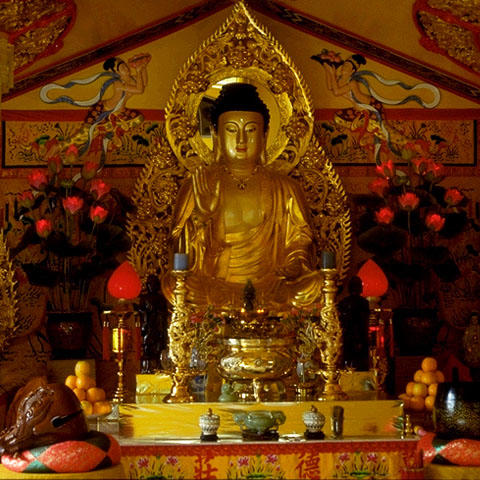
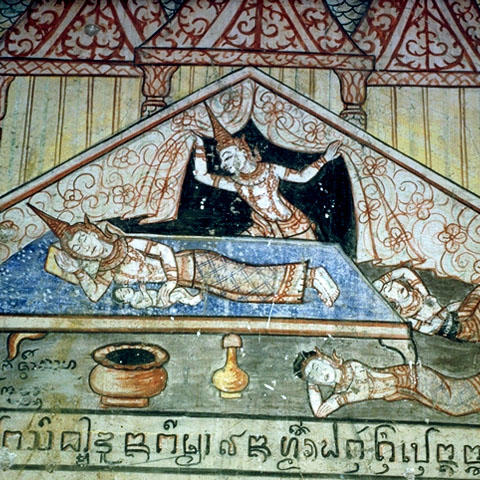
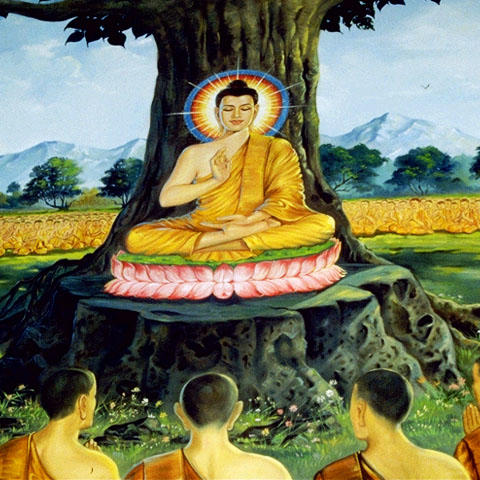
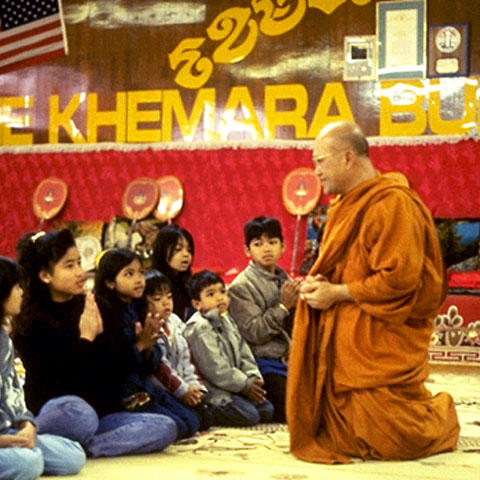
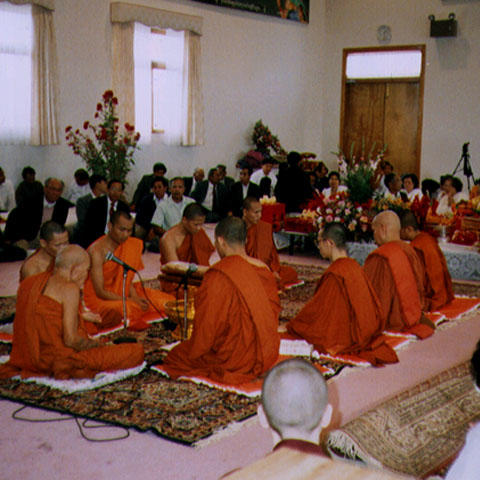
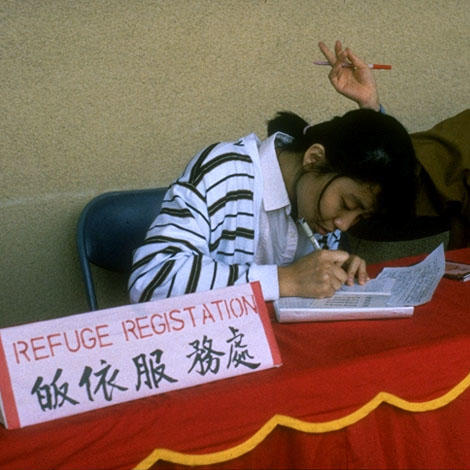
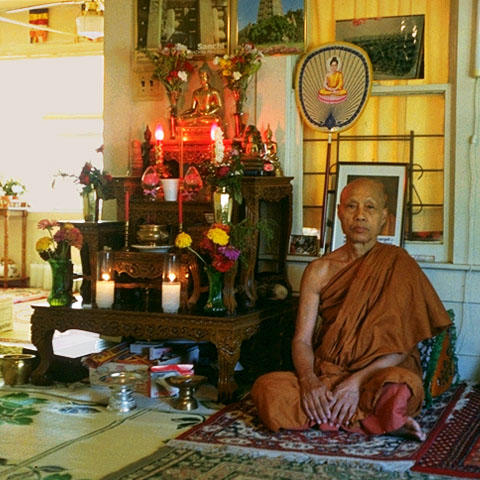
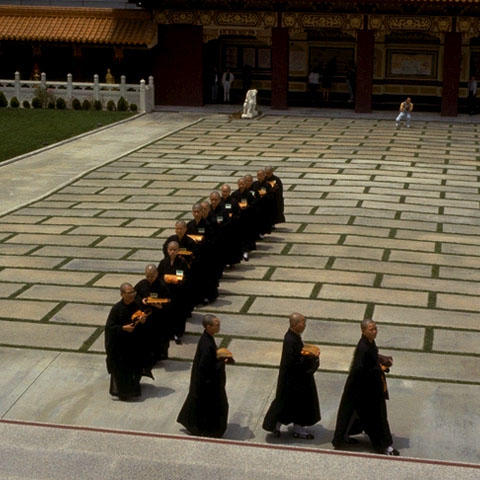
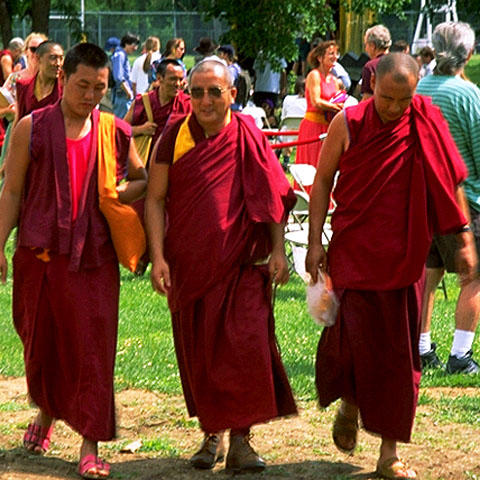
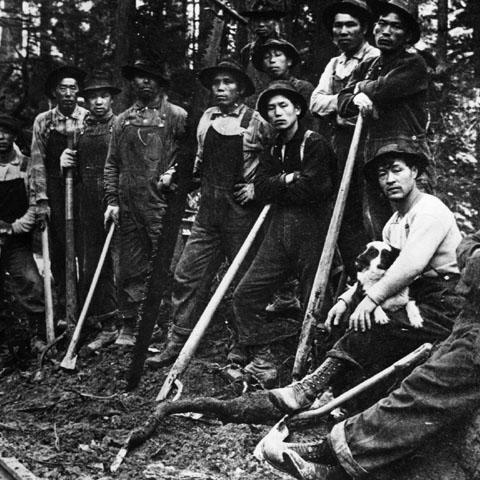
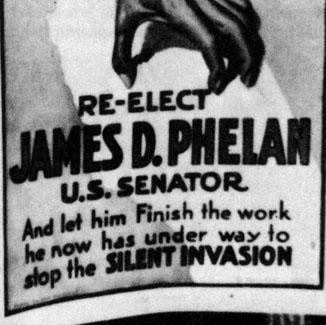
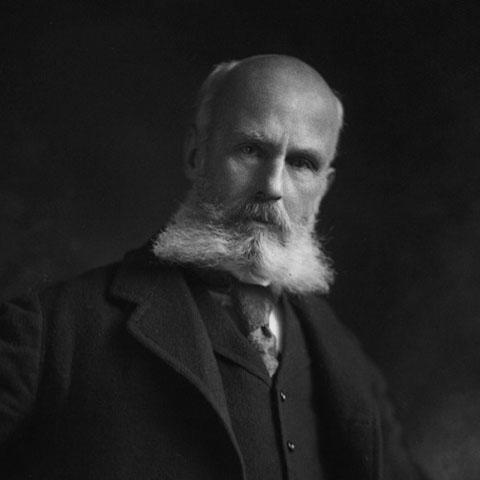
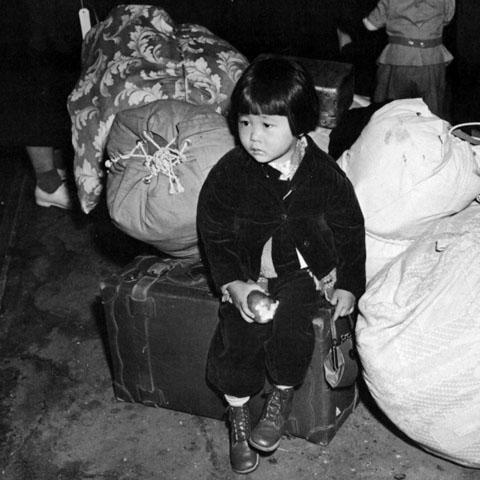
 In the 1950s a new generation of Buddhists, poets, and intellectuals brought their enthusiasm for Zen Buddhism to their work. Advocates like Jack Kerouac, Gary Snyder, and Allen Ginsberg placed Zen Buddhism at the cutting edge of the American literary and cultural scene....
In the 1950s a new generation of Buddhists, poets, and intellectuals brought their enthusiasm for Zen Buddhism to their work. Advocates like Jack Kerouac, Gary Snyder, and Allen Ginsberg placed Zen Buddhism at the cutting edge of the American literary and cultural scene.... 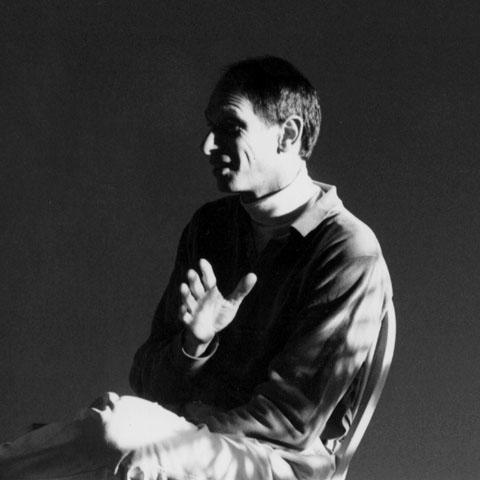
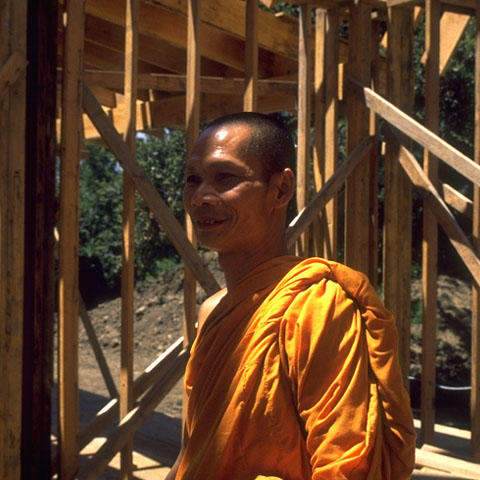

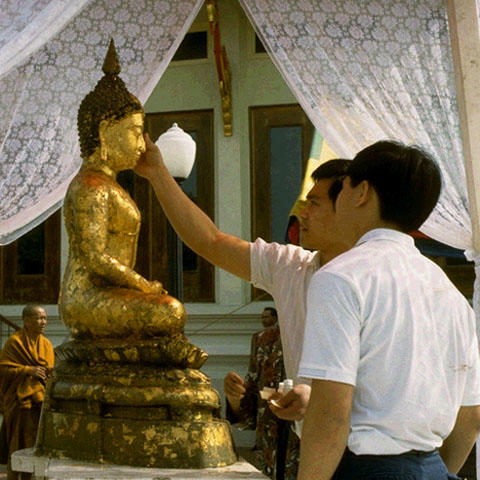
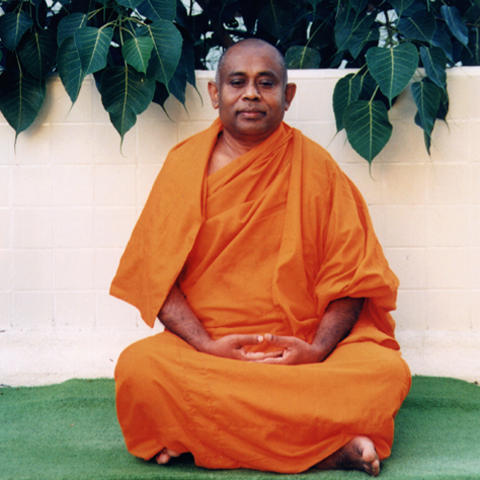
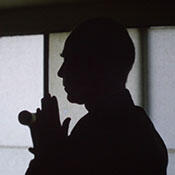 The Chinese Chan, Korean Son, and Japanese Zen traditions emphasize meditation practice. In addition, other practices are commonly used, such as the presentation of koans, or questions given by a master to a student, intended to break students free of conceptualizing thoughts that are obstacles to enlightenment....
The Chinese Chan, Korean Son, and Japanese Zen traditions emphasize meditation practice. In addition, other practices are commonly used, such as the presentation of koans, or questions given by a master to a student, intended to break students free of conceptualizing thoughts that are obstacles to enlightenment.... 